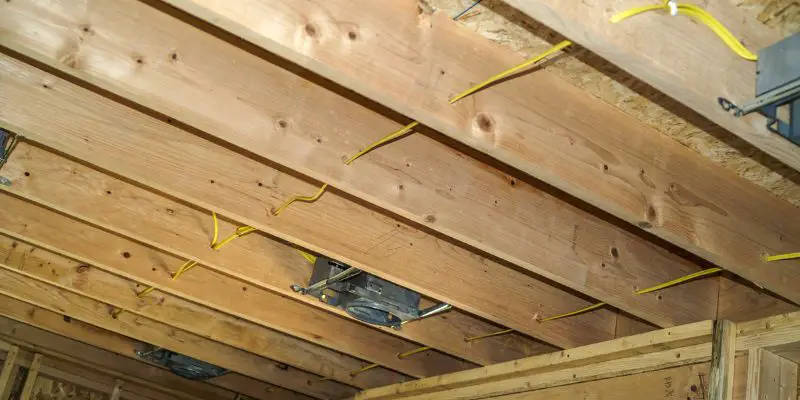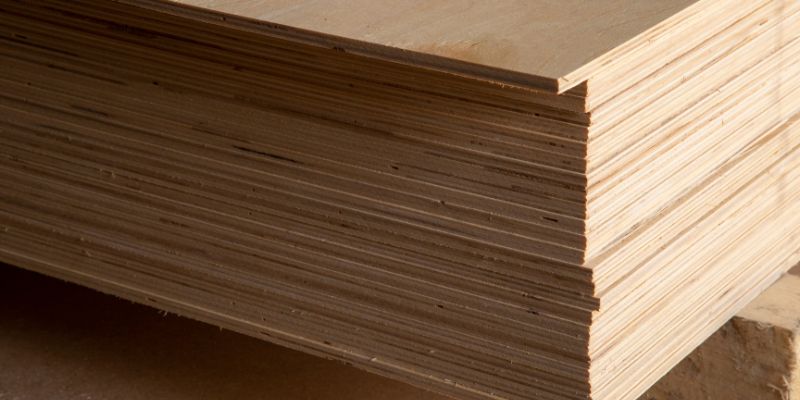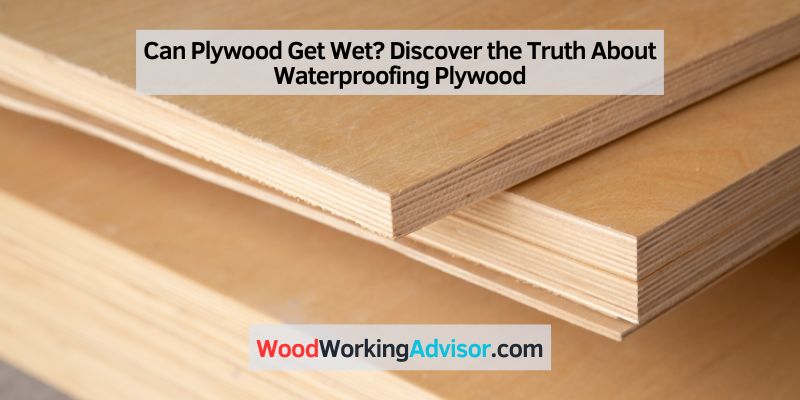Yes, plywood can get wet and may sustain damage if not properly protected or treated. Plywood is a versatile material commonly used in construction and furniture making.
It is made up of layers of thin wood veneer that are glued together, which can make it susceptible to water damage. When plywood gets wet, the layers may start to separate or warp, leading to structural weakness. However, there are treated and waterproof plywood options available that are designed to withstand exposure to moisture.
Proper sealing, finishing, and maintenance can also help protect plywood from water damage.
Understanding Plywood
In the world of construction and woodworking, plywood is an incredibly versatile material that finds its applications in a wide range of projects. From building furniture to constructing houses, plywood is a popular choice due to its strength and durability. However, one common question many people have is whether plywood can withstand being exposed to water or getting wet. In this article, we will dive into the composition and characteristics of plywood to understand whether it can handle moisture and how it is made.
What Is Plywood?
Plywood is a type of engineered wood that is made by gluing together several thin layers or plies of wood veneers. These veneers are typically made from high-quality woods like birch, oak, or maple, and are arranged in alternating grain directions. The layers are then bonded together using strong adhesives under high pressure, creating a sturdy and flat panel.
Plywood comes in different grades, with each grade serving a specific purpose. Higher grades of plywood are generally more resistant to moisture, while lower grades may require additional treatments or coatings to make them suitable for wet environments.
How Is Plywood Made?
The production of plywood involves several steps to ensure its strength and stability. Here’s a brief overview of how plywood is made:
- Veneer production: The first step is to produce the wood veneers that will be used to make the plywood. This is done by peeling or slicing logs into thin sheets.
- Sorting and drying: The veneers are then sorted based on their quality and moisture content. They are typically dried in kilns to reduce moisture levels and enhance their stability.
- Glue application: A special adhesive, usually a phenolic resin or a urea-formaldehyde resin, is applied to the veneers. This glue helps to bond the layers together and ensures the structural integrity of the plywood.
- Pressing and hot pressing: The glued veneers are stacked together with their grain directions in alternating patterns. The stack is then placed inside a hydraulic press, where heat and pressure are applied to cure the adhesive and create a solid bond between the layers.
- Finishing: Once the plywood panel is formed, it is trimmed, sanded, and finished with a protective coating to enhance its resistance to moisture, fungi, and other environmental factors.
It’s important to note that the quality of plywood and its ability to withstand wet conditions can vary depending on the manufacturing process and the type of adhesive used. Some plywood may be specifically designed for moisture resistance, while others may require additional waterproofing treatments.

Effects Of Water On Plywood
Water can have significant effects on plywood, leading to potential damage and deterioration. Understanding the impact of water on plywood is crucial in determining its suitability for various applications. In this section, we will explore the reasons behind water damage to plywood and the consequences it can have.
Why Does Water Damage Plywood?
Water damage to plywood can be attributed to its composition and structure. Plywood is made up of several layers of thin wood veneers that are glued together. These layers are arranged perpendicular to each other, providing strength and stability to the board. However, the glue used in plywood manufacturing is susceptible to water penetration.
When water comes into contact with plywood, it can seep through the exposed edges, resulting in the absorption of moisture. This moisture gradually affects the glue, causing it to weaken and degrade over time. As a consequence, the layers of plywood may start to separate or delaminate, compromising the structural integrity of the board.
What Happens When Plywood Gets Wet?
When plywood gets wet, several undesirable consequences can occur, depending on the extent and duration of exposure to water. These include:
- Swelling: Water absorption causes plywood to expand, leading to swelling and warping of the board. This can cause problems in construction and woodworking projects where precise measurements and fitting are crucial.
- Discoloration: Moisture can cause plywood to develop unsightly stains or discoloration, diminishing its aesthetic appeal.
- Mold and Fungus Growth: The presence of excess moisture creates an ideal environment for mold and fungus to thrive. This not only damages the plywood but also poses health risks to individuals exposed to the contaminated area.
- Rotting: Continuous exposure to water can result in the rotting of plywood. The moisture provides a breeding ground for bacteria and fungi that break down the wood fibers, causing decay and structural weakness.
- Reduced Strength: The degradation of glue due to water damage compromises the strength and load-bearing capacity of plywood, making it unsuitable for applications where strength is essential.
It is crucial to protect plywood from excessive water exposure to ensure its longevity and performance. By employing appropriate protective measures, such as sealing, treating, and using water-resistant adhesives, the detrimental effects of water on plywood can be minimized or prevented.

Waterproofing Options For Plywood
Plywood is a versatile and commonly used building material, but can it withstand exposure to water? The answer lies in the right waterproofing options. Whether you need to protect plywood used in outdoor furniture, marine projects, or wet environments, there are several effective strategies you can employ. In this blog post, we will explore three popular methods for waterproofing plywood: sealing the edges, applying waterproof coatings, and using marine-grade plywood.
Sealing Plywood Edges
One of the essential steps in waterproofing plywood is sealing the edges. Since the edges of plywood are more vulnerable to water damage, they require special attention. Fortunately, sealing the edges of plywood is a straightforward process.
- Inspect and prepare the edges: First, ensure that the edges are clean and free from any dirt or debris. Use sandpaper or a file to smooth any rough edges.
- Choose a sealant: There are a variety of sealants available in the market, such as polyurethane, silicone, or epoxy sealants. Choose a sealant that is specifically designed for exterior or marine use.
- Apply the sealant: Using a brush or a sponge, apply the sealant generously to all the edges. Make sure to cover the edges thoroughly, and allow the sealant to dry completely before proceeding to the next step.
- Sand and repeat: After the first coat is dry, lightly sand the edges and apply a second coat of sealant. This additional layer will provide extra protection against water penetration.
Applying Waterproof Coatings
Another effective method for waterproofing plywood is applying waterproof coatings. These coatings create a barrier that prevents water from seeping into the plywood, thus extending its lifespan.
- Clean and prepare the plywood: Remove any dirt, dust, or contaminants from the surface of the plywood. Smooth any rough patches using sandpaper.
- Choose a waterproof coating: There are various waterproof coatings available, such as polyurethane, epoxy, or latex-based coatings. Select a coating that suits your specific needs.
- Apply the coating: Using a brush or a roller, evenly apply the waterproof coating to the entire surface of the plywood. Ensure that there are no missed spots or uneven application.
- Allow drying and repeat: Follow the manufacturer’s instructions regarding the drying time. Once the first coat is dry, lightly sand the plywood and apply a second coat for enhanced protection.
Using Marine-grade Plywood
If you require plywood that can withstand continuous exposure to moisture, marine-grade plywood is the ideal choice. Marine-grade plywood is specifically manufactured to resist water damage and is commonly used in boat building and other marine applications.
Unlike standard plywood, marine-grade plywood is constructed with waterproof glue and specially selected veneers that offer improved resistance against moisture. It is important to note that marine-grade plywood may be slightly more expensive than regular plywood, but its durability and long-lasting waterproof properties make it a worthwhile investment for projects in wet environments.
By utilizing these techniques such as sealing the edges, applying waterproof coatings, or opting for marine-grade plywood, you can ensure that your plywood remains protected from water damage, extending its lifespan. Choose the method that best suits your specific requirements and enjoy the benefits of waterproof plywood in your next project.
Frequently Asked Questions On Can Plywood Get Wet
Is Plywood Ruined If It Gets Rained On?
Exposing plywood to rain can ruin it, as water can cause swelling, warping, and rotting. It’s crucial to protect plywood from moisture by covering it properly or sealing the edges with waterproof sealants.
What Plywood Is Ok To Get Wet?
Exterior-grade plywood with waterproof adhesive is suitable for wet conditions. It is designed to resist moisture and prevent rotting. Make sure to seal the edges to provide maximum protection against water damage.
Can Exterior Plywood Get Wet?
Yes, exterior plywood can get wet, but it is designed to withstand moisture. It has water-resistant adhesive and is treated to resist rotting and warping. However, extended exposure to water can still damage the plywood, so it’s important to protect it with a finish or sealant.
Is Wood Ruined If It Gets Wet?
Wood can be damaged if it gets wet. The water can cause the wood to warp, crack, or rot over time. It is important to protect wood from excessive moisture to maintain its strength and durability.
Conclusion
To sum up, it is crucial to consider the effects of water on plywood. While it can withstand some moisture, prolonged exposure or being completely submerged can lead to the deterioration of its structural integrity. To prevent this, appropriate sealing and maintenance are necessary.
By understanding the limitations of plywood and taking necessary precautions, you can ensure its longevity and effectiveness for your projects.


